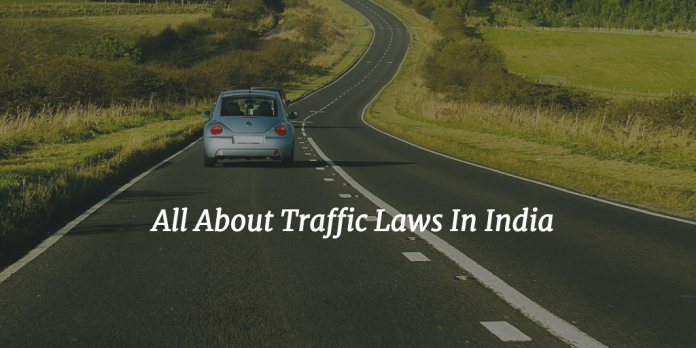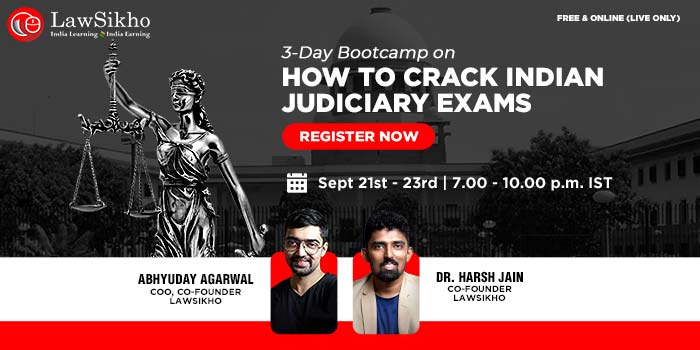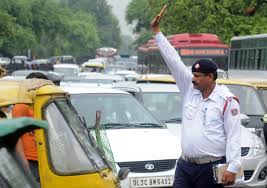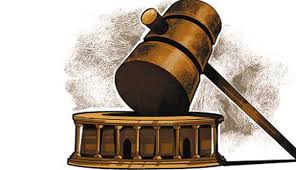

Traffic congestion is one of the common problems faced by nearly all the people in India. The fundamental reason behind this is that the existing roadways are not capable of handling the increasing number of motor vehicles on roads.

Cities like Delhi, Mumbai, Kolkata, Chennai, Patna, Lucknow, etc, have to deal with this common problem of traffic. They have to deal with thousands of cars running through the streets each day. They share the same problem of traffic and the reason behind the problem is also same; increasing number of cars on the road, poor road management, poor practices on behalf of employers, etc.

The population has increased, and therefore more people are adding into the city’s population day by day. Cities have limited capacity but over-crowding leads to chaos. A city has a limited capacity to expand due to lack of proper planning and infrastructure. A Street in a city with a lane on each side before might not suffice after few years when the population has increased.
Limited space and lack of proper infrastructure add to the problem. Planning plays a significant role in building any infrastructure. Government fails to see the future and act on it. Hence, cities are forced to work with the routes they already have. This being the vital reason for traffic congestion.
India has the second largest road networks in the world and it accounts for 10% of worldwide road fatalities. From this point of view, Road safety responsibility becomes essential for everyone. Traffic laws become imperatively crucial there are few laws regarding traffic laws are discussed in the paper, which needs to be known to all who travel and drive.
Registration is a proof of ownership, and it is also an important document for the sale of a vehicle and transfer of its ownership. [1] Vehicle Registration is mandatory under the purview of section 39 of The Motor Vehicle Act, 1988 that falls under the Concurrent List of Schedule VII of the Constitution of India. Section 39 prohibits driving of any unregistered motor vehicle and states that no owner of the vehicle should permit driving of an unregistered vehicle in public place, which is not registered under the provision of the MV Act. The exception to this provision is cars with the dealers. Section 192 of The Motor Vehicle Act, 1988, states that whoever drives a motor vehicle or causes or allows a motor vehicle to be used in contravention of the provisions of Section 39 shall be punishable with a fine, which may extend to five thousand rupees but shall not be less than two thousand rupees for a second time or subsequent offence with imprisonment which may extend to one year or with fine which may extend to ten thousand rupees but shall not be less than five thousand rupees or with both.
The implementation of various provisions of this Act rests with the State Governments.
To register a new, private, non-commercial vehicle, you need to apply in the prescribed form (either available online or with the concerned local authorities) to the RTO (Regional Transport Officer)/Transport Department of the area of your residence. [2]
On purchasing a new vehicle, the owner must apply for registration within seven days from the date of delivery of the vehicle with the following documents: [3]

Additionally, a one-time road tax and a required registeration fee is necessary, the vehicle is physically inspected by the Inspecting Authority and a unique Registration Mark assigned to the vehicle for display thereon. [4]
In the case of joint ownership, the registration of vehicle can be applied by one of the owners. If a vehicle registered in one state and kept in another state for more than twelve months, then the owner of such vehicle has to approach the registration authority for assignment of new registration mark within whose jurisdiction the vehicle is.
Section 49 of The Motor Vehicle Act, 1988, talks about the change of address and states that the owner of the vehicle is required to approach the authority within 30 days whose jurisdiction he has shifted for recording the change of address.
As per the Section 3 of the Central Motor Vehicle Act, 1988 nobody can drive at any public place until he holds an effective driving license issued to him authorising him to drive the vehicle. A motor cab or motor vehicle hired by a person for his personal use or rented under a scheme to drive a transport vehicle is an exception. Section 5 of the Motor Vehicle Act, 1988 talks about the responsibility of the owner to not to allow one’s vehicle to be driven by others.

The Learner’s License is a kind of temporary license. It is valid up to only six months. It is issued on the basis of the place where you reside or where you work or on the basis of the school or the place where one intend to receive driving instructions. Learner’s license holder is not eligible to drive a transport vehicle unless he drives a light motor vehicle (LMV) for one year.
The Permanent driving license is issued after thirty days (to apply within 180 days) from the date of issue of the learner license. It is presumed that the person who gets the permanent driving license should be familiar with all the vehicle systems, driving, traffic rules & regulations.
Duplicate License is issued in the case of loss, theft, or on mutilation of the original license. The required documents are:
The duplicate license functions similar and is valid for the same period as the original license. It is always recommended to keep a photocopy of the original license or particulars of license noted down in order to make it easier for the issuing authority to locate the particulars from their record.
A motorcycle licence or Two-wheeler license is issued by the Regional Transport Authority (RTO) to permit driving of only two-wheeler vehicles like the bike, scooter, moped etc.
The Light Motor Vehicle License is issued to drive light motor vehicles only.The Light motor vehicle includes the jeep, motor car, auto rickshaws, taxi, three-wheeler delivery vans etc.
It is issued to drive Heavy Motor Vehicle. Heavy Motor Vehicle includes heavy vehicles like trucks, buses, tourist coaches, cranes, goods carriages, etc. A person with HMV license can drive light vehicles but a person having Light Motor Vehicle License is not permitted to drive heavy vehicles.
The motor licensing authority also issues International Driving License. A person visiting the country is required to collect the license from there within one year period. Documents which are required to produce address proof, birth certificate, valid passport and valid visa. The validity of this license is for one year.
Anyone who is above 18 years of age is eligible to obtain a driving license by following the prescribed procedures. But a person who is under the age of 16 years can drive a motor vehicle of engine capacity not exceeding 50cc. [7] No person under the age of 20 years shall be eligible to drive a transport vehicle.
An application for a driving license shall be made in form no.4 and shall be accompanied by: [8]
According to section 19 of The Motor Vehicles Act, 1988 a license can go for suspension if he has caused death or grievous hurt of one or more persons. Conditions where Licensing Authority can revoke a license are:
In case the vehicle is lost or destroyed or become permanently incapable [9] , the registering authority has the power to cancel the registration of the vehicle.
The driver of any motor vehicle is duty bound to produce a license for examination if called by the authorities. Another thing is that if one’s vehicle is involved in any accident then, the person is duty bound to stop the vehicle. [10]
Indian law under the Motor Vehicle Act, 1988 and other related act provide for preventing the vehicles from running on footpaths. There are various Acts that safeguard pedestrian rights indirectly. The Indian Penal Code (1860) sections 279, [11] 304 (Punishment for Culpable Homicide not Amounting to Murder), and 336 [12] /337/338 protects the public, which includes pedestrians, against rash driving and negligence by motorists. The Motor Vehicles Act (1988), sections 7-38 talks about penalizing the motorists exceeding speed limits and license regulation, etc., indirectly protecting vulnerable road users. Section 138 clause (h & i) empowers the State Government to prevent motor vehicles from using the pavements for driving or parking. The Rules of the Road Regulation (1989) has three rules mentioning pedestrians or their right of way, which are:
The Municipal Corporation Acts also protect public roads and streets by terming all obstructions illegal unless made with the prior permission of the collector. They are entitled to ascertain the footpath width based on a width of the public roads. Under the Persons with Disabilities (equal opportunities, protection of rights and full participation) Act (1995), the government must provide for auditory signals, engraving on the zebra crossings, slopes in pavements for easy access to a wheelchair, and warning signs at appropriate places. [13]

Impairment by alcohol is a major factor in causing accidents and it has been found in a study that alcohol was present in between 33% and 69% of fatally injured drivers, and in between 8% and 29% of drivers involved in crashes who were not fatally wounded. [14] Alcohol consumption by drivers also puts pedestrians and riders of motorized two-wheelers at highest risk. Section 184 of The Motors Vehicles Act, 1988 talks about driving by a drunken person or by a person under the influence of drugs. It shall be punishable for the first offence with imprisonment for a term which may extend to six months, or with fine which may extend to two thousand rupees, or with both; and for a second or subsequent offence, if committed within three years of the commission of the previous similar offence, with imprisonment for a term which may extend to two years, or with fine which may extend to three thousand rupees, or with both. [15]
Section 205 talks about presumption of unfitness to drive and states that in any proceeding for an offence punishable under section 185 if proved that the accused when requested by a police officer at any time so to do, had refused, omitted or failed to consent to the taking of or providing a specimen of his breath for a breath test or a blood sample for a laboratory test, his refusal, omission or failure may, unless reasonable cause, therefore, is shown, be presumed to be a circumstance supporting any evidence given on behalf of the prosecution, or rebutting any evidence presented on behalf of the defence, with respect to his condition at that time. [16]
Key:
| 1. OFFENCES RELATED TO DOCUMENTS | |||
| S.NO | OFFENCES | MAXIMUM PENALTY | SECTION |
| 1.1 | Driving without a Valid License | Rs. 500/- and /or imprisonment ( 3 months) | 3 r/w 181 MVA |
| 1.2 | Allowing vehicle to be driven by a person who does not possess a Valid License. | Rs. 1000/- and/or imprisonment ( 3 months) | 5 r/w 180 MVA |
| 1.3 | Not carrying documents as required. | Rs. 100/- | 130(3) r/w 177 MVA |
| 1.4 | Driving without Valid Insurance. | Rs. 1000/- and/or imprisonment ( 3 months) | 130 r/w 177 MVA |
| 1.5 | Driving without Valid Permit. | Rs. 5000/- ( not less than Rs. 2000/-) | 130 r/w 177 MVA |
| 1.6 | Driving without Valid Fitness. | Rs. 5000/- ( not less than Rs. 2000/-) | 130 r/w 177 MVA |
| 1.7 | Vehicle without R.C. | Rs 2000/- | 39 r/w 192 MVA |
| 2. OFFENCES RELATED TO DRIVING | |||
| S.NO | OFFENCES | MAXIMUM PENALTY | SECTION |
| 2.1.1 | Driving by Minor . | Rs. 500/- | 4 r/w 181 MVA |
| 2.1.2 | Allowing Unauthorized person to drive . | Rs. 1000/- | 5 r/w 180 MVA |
| 2.1.3 | Driving without Helmet. | Rs. 100/- | 129 r/w 177 MVA |
| 2.1.4 | Seat Belts not fastened. | Rs. 100/- | 138(3) CMVR |